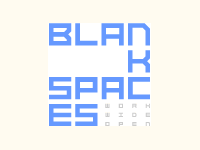Thursday, November 20, 2008
Interview with Jerome Chang, BlankSpaces

One of the recent trends in the technology industry here in Los Angeles is the use of "coworking" spaces--flexible workspaces where companies can rent open office space. BLANKSPACES (www.blankspaces.com) -- which is on Wilshire Blvd.--is the brainchild of architect Jerome Chang. Chang is looking to open up two to three more similar spaces in the next year. The existing space on Wilshire is heavily used by meetups, business networking groups, as well as local startups, and we thought we'd talk with Jerome to better understand what the whole idea is behind the space and coworking.
What's the idea behind coworking?
Jerome Chang: Coworking, as many people are starting to understand, is the idea of working within a community, so you can collaborate. It's an innovative version of the traditional executive suite--which are usually small offices within a bigger floor plan. What we've done is tear down the walls, and get people to be a part of the community and to interact with them, without closed doors. Our space--BLANKSPACES--is the same, and is very open, though we do have private offices to offer some level of privacy.
Tell us a little bit about your space--how long has it been around?
Jerome Chang: We've been around for less than a year. We're in month seven, going on to month eight.What kind of clients are using your space?
Jerome Chang: We have quite a variety of residents here, ranging from a lawyer, to real estate investors, to technology startups, to people in the entertainment industry, such as production firms, script writers, and filmmakers.
What is it that is different about your space, and why are they using you?
Jerome Chang: We really have quite a lofty goal, in that we are trying to drive the movement to create modern workstyles--that is, that people can work from wherever, and people work most importantly for themselves, but not by themselves. Those could be mobile professionals, corporate firms, sales people, or people who normally work at client sites or home based offices. Many of those people have been stuck at home, because there were no other choices. You could go to Starbucks, but there are challenges at working at a cafe. You can never get a table, you may not get one with power, and of course it's not conductive to business. You can't take a conference call or a client call at a cafe, and it's all very noisy and distracting. We're addressing all of those issues out there, and adding the community element on top of that.
If you're running a company, why not just go to an executive suite, or sublease some space?
Jerome Chang: An example: we have a four person production firm, which moved into our space in July, but found that had to increase to six people soon after. That's a fifty percent increase, and there's no space that's elastic and on-demand as us. It addresses how variable a company is from year-to-year, and we can handle, on short notice, when they expand and contract. That's one thing an office suite can't offer, because they're a collection of smaller offices, which aren't open, are hard to grow and expand and contract with your needs. Our scenario at BLANKSPACES is much more modern, designed ground up for this kind of work style. We've got high end, Steelcase furniture--I'm an architect--and it's got a much more hip, boutique, dot-com feel, rather than the executives suites which just have Staples furniture. We don't have black leather chairs and cabinets, and it's not about "executive/VIP" -- it's about open collaboration and wanting to get work done.
Is this something similar to executives suites, where it's month to month?
Jerome Chang: You can rent desk or office space, or our "work bar" which is a version of a cafe counter--by the day, by the month, or the year, however you like. And, you can change it throughout your term.
It seems like there are quite a number of high tech clients using your space?
Jerome Change: A couple of the typical clients here are Tsavo Media, the new company from Michael Jones and Twiistup founder Mike Macadaan. Mike's latest claim to fame was selling Userplane to AOL. They're here for the month because they're building out their office space, and it's taken longer than expected. They came here, and it worked. We have Sometrics, which is kind of a search technology for Web 2.0, and they were here for a few days because they needed an internet connection. We think, in terms of tech startups, they change sizes much faster than other companies. They might be in startup mode with two to four people, then go into full production for coding and deployment, and have up to 10 or 12 people, which is huge growth. How do you find office space for your needs like that on such short notice? With tech startups, they get funding and want to commit only for six to nine months until their next milestones, but real estate brokers won't allow such short term leases. With executive space, it's the same problem--they're too traditional, not collaborative, and not open like a technology company needs to run. Our environment and community is all about that.
How big of a company could fit in your space?
Jerome Chang: We have about 50 to 60 seats here, so anywhere between 1 person or 20-30 could sit in here.
The economy has been hitting the commercial real estate market recently, how does that affect your business?
Jerome Change: Our business model works best during a downturn in the economy. There are more and more people who are having a difficult time committing to a three to five year lease. They're unable to commit to a staffing size, so we can respond in an instant whether they want 3 months or four months, four desks now or six desks later--we can do that.